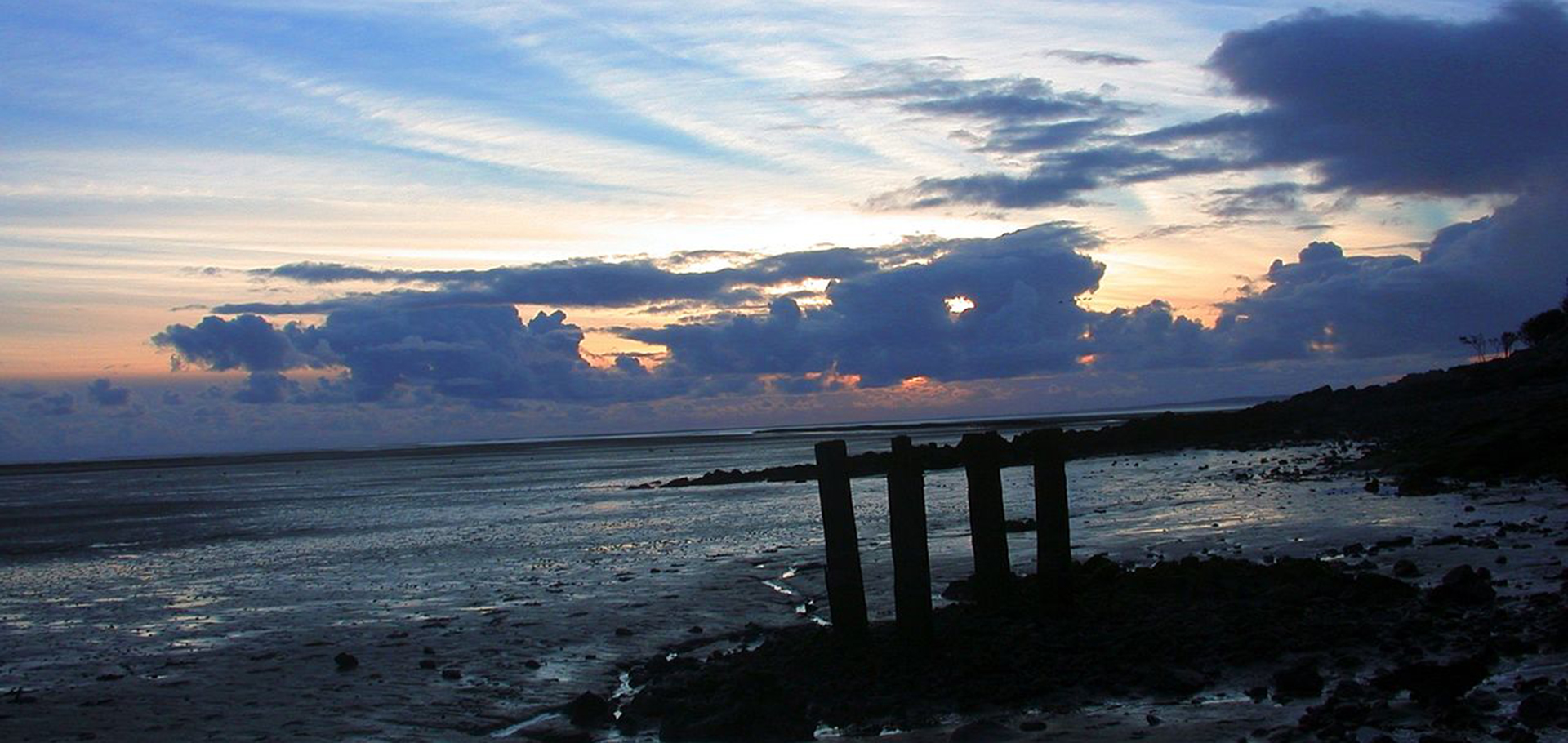Blog: Karen Lloyd and Andrew M Hurley
Two authors discuss how the wild and unforgiving landscapes of Morecambe Bay have shaped their writing.
While I was musing on the possibility of writing The Gathering Tide, I was aware that although there were many books about Morecambe Bay itself thanks to Queen’s Guide to the Sands Cedric Robinson and the photographic books of Peter Cherry, there was nothing that gave a contemporary portrait of the edgelands of the bay.
Research began as a system of walking and then researching the places I’d been to. My first walk was to Sunderland Point, and I realised straight away there was a story to be told. There were documents inferring the slave boy whose grave is there had died of a broken heart after being abandoned, the mawkish epitaph penned by the Reverend Watson, and the tension between the public keeping the grave decorated in tribute but with, so it seemed, little concern that they were maintaining the name Sambo – all this plus Lancaster’s place in the Slave Triangle, which I was only vaguely aware of.
The least familiar landscapes I encountered were the trip out into the bay with Cedric, the cross-sands route to Piel Island, following the tide out, and the island that even some locals don’t think exists – Foulney. On the cross-sands route we passed the skeletal remains of several vehicles that had become stuck, like mythical rotting beasts, and watched a ship move out into the channel. We were at eye level with the hull, and briefly visited Sheep Island, where there had been an isolation hospital for incoming sailors carrying diseases. Foulney was like being on another planet. As my son said: “It’s like the moon.”
Desolate, lonely, beautiful and dangerous. There’s something about the atmosphere that still fascinates me. I think it’s partly to do with some of the things that Karen mentioned – the stories about shipwrecks and tragedies that have left physical reminders behind – but there’s also something much harder to define, something bound up in the rawness of the weather there, the mercurial tides. It always seemed a place that belonged to something else, which is, I guess, where the supernatural of The Loney came from. I’m drawn back there time and again, but for what, I don’t really know. What is it about places like Morecambe Bay that beguile us so much?
It’s interesting how different people have read and reacted to the landscape in the book. Those from Lancashire have tended to feel as though they know it on a much more intimate level, whereas those who are from elsewhere perhaps read it as a kind of northern exotica. I don’t know. But I think that it’s hard not to have a relationship with the natural world if you live in the north of England. The moors, the mountains, estuaries, the sea are all within touching distance.
Landscape plays a vital role in both Karen and Andrew’s books. Not just in the shape of the land but in how that in turn has shaped and affected the people who live in it. Witches, myth, battles, invasions, the amazing richness of placenames – it’s all Lancashire. Both of them, in different ways, draw upon this power.
Karen Lloyd and Andrew Hurley will continue the discussion on 17 March at an event hosted by Dom Conlon, at the Storey, Lancaster as part of Litfest 2016. They’ll also talk about access to writing and reading across Lancashire – asking whether its unique geography and the cuts to transport services, libraries and other support services mean that vulnerable people become increasingly cut off from social and educational opportunities. Litfest 2016 continues until Sunday March with a talks, readings and discussions – encompassing science fiction, poetry, storytelling and more. Book here.
Photo: Jim Walton

Leave a reply
Your email address will not be published.